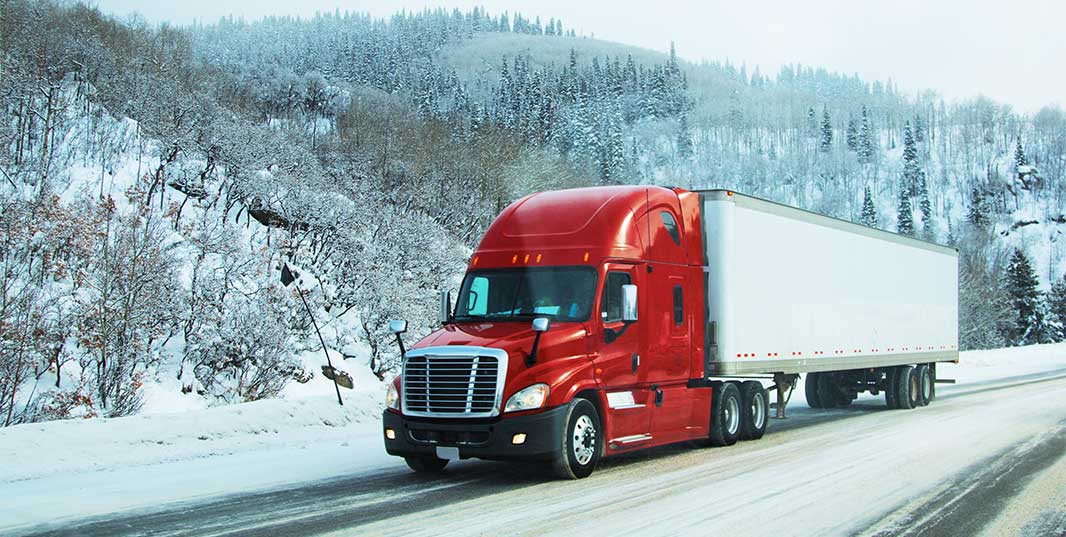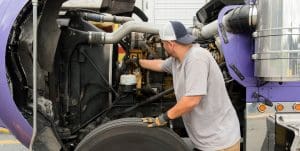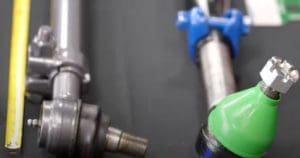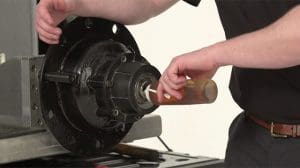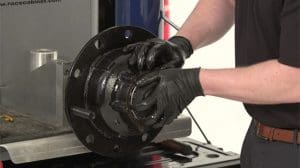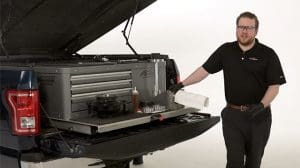When the holiday season is upon us each year, we’re reminded of the months ahead with heavy traffic and slippery road conditions. Soon, online purchases will increase, along with the need to keep shelves stocked during the busiest season of the year. As a result, retailers will begin dispatching more vehicles to keep up with shipping demands.
As traffic volume increases out on the roads, this time of year will also bring wintry weather along with it. Since snowy and icy road conditions are sure to cause more accidents and stress for truck drivers, here are some tips that drivers can follow to help keep the roadways safer this winter.
Prepare your truck
Before heading out on the road, it’s important to make sure that your vehicle is ready for the trip ahead. Of course, this is a good general practice, but it’s all the more urgent when traveling out into harsh weather conditions with poor visibility. Allow some extra time for a pre-trip inspection. Check tire pressures, inspect your wipers, and be sure to top off all fluid levels before you get behind the wheel. It’s a simple yet effective practice for the long haul.
Prepare yourself
It’s equally important to give yourself an honest look in the mirror before heading out. Ask yourself, “Am I okay to drive right now?” Much like your truck requires proper maintenance to make the long-distance trip, drivers need plenty of rest and hydration for peak performance. It’s better to err on the side of caution when facing inclement weather and heavy traffic. If you’re feeling tired or drowsy, pull to the side, park your truck, and wait until you’re more alert and ready to merge back on the road again.
Safety first
Semi-trucks are some of the largest vehicles out on the road, but it’s still good practice to wear your safety belts. Whether you’re a new driver or a seasoned veteran, the same caution is advised given that so many accidents occur from factors outside of a driver’s control—like other drivers, poor weather conditions, mechanical failures, and blowouts.
In fact, according to a recent study by the Federal Motor Carrier Safety Association (FMCSA), “52% of truck-occupant-fatalities in large trucks involve a rollover… Rollover in a large truck increases the likelihood of fatality by 30 times… In a rollover, a truck driver is 80% less likely to die when wearing a safety belt.”
Additionally, there is a lot of responsibility placed on commercial truck drivers to protect the smaller passenger vehicles all around you by driving safely and carefully. With all the added weather-related pressures of the season, remember to fall back on your training and stick to the basics: Buckle up, be safe, and be sober. It’s easy to remember and so important when spending as much time out on the road as commercial motor vehicle drivers do.
Know your route
Prior to making a long-distance trip, be sure to plan ahead and familiarize yourself with the route you’ll be taking. This includes staying up-to-date on any weather conditions that may interfere with your schedule.
While driving, be aware of your surroundings and prepare to keep an eye on the flow of traffic. Try not to veer off the planned course or attempt to take backroads or detours as much as possible. Lastly, if problems arise, remember the importance of tuning in and communicating with other truck drivers via CB radio. It’s a sure and time-tested way to look out for and alert one another concerning road closures, accidents, inclement weather, and available rest stops along the way.
Drive now, text later
While the same message goes out to anyone with a smartphone who gets behind the wheel, it’s even more important for commercial drivers to follow this rule. Not only are truck drivers banned by federal law from texting and driving, but doing so can cause hefty fines, penalties, and even licensing disqualifications to follow soon after. It just isn’t worth it. Texting (and social media, for that matter) can wait.
Slow down
Not only does this apply to the speed limit in general, but it’s a good practice to watch your following distance in both heavy traffic and inclement weather. Be weather-conscious and plan ahead as best as you can. Patience and discretion are healthy behaviors to practice while on the roads this winter season. Let the impatient drivers go around you if they’d like, just guard yourself against any road rage or irresponsible behavior.
Stay in your lane
When the roads are snow-covered and icy, do your best to stay in your lane. FMCSA statistics also show that unsafe lane changes and merges still remain the major causes of accidents in wintery conditions. Repeatedly changing lanes is a dangerous pattern to fall into. Instead, change lanes only when necessary, and you’ll be better off.
Pack an emergency kit
Drivers can have some peace of mind by also having a backup plan in place before starting on a long trip this winter. It’s wise to “prepare for the worst” and have an emergency kit ready to go, should anything happen along the way. Warm blankets, heavy clothing accessories, water, and dry food are all good options to include. Remember, heavy snow, wind, and ice create conditions that could easily push drivers off the road. Dire conditions like major accidents, snow and ice storms, and traffic stalls could also block access for any help arriving, so it’s a good idea to be ready, just in case.
While not an exhaustive list, following these precautions can help commercial truck drivers make the roadways safer this winter. For more safety tips and to read about ways to enhance your fleet safety year-round, visit the STEMCO Wheelhouse Blog.


